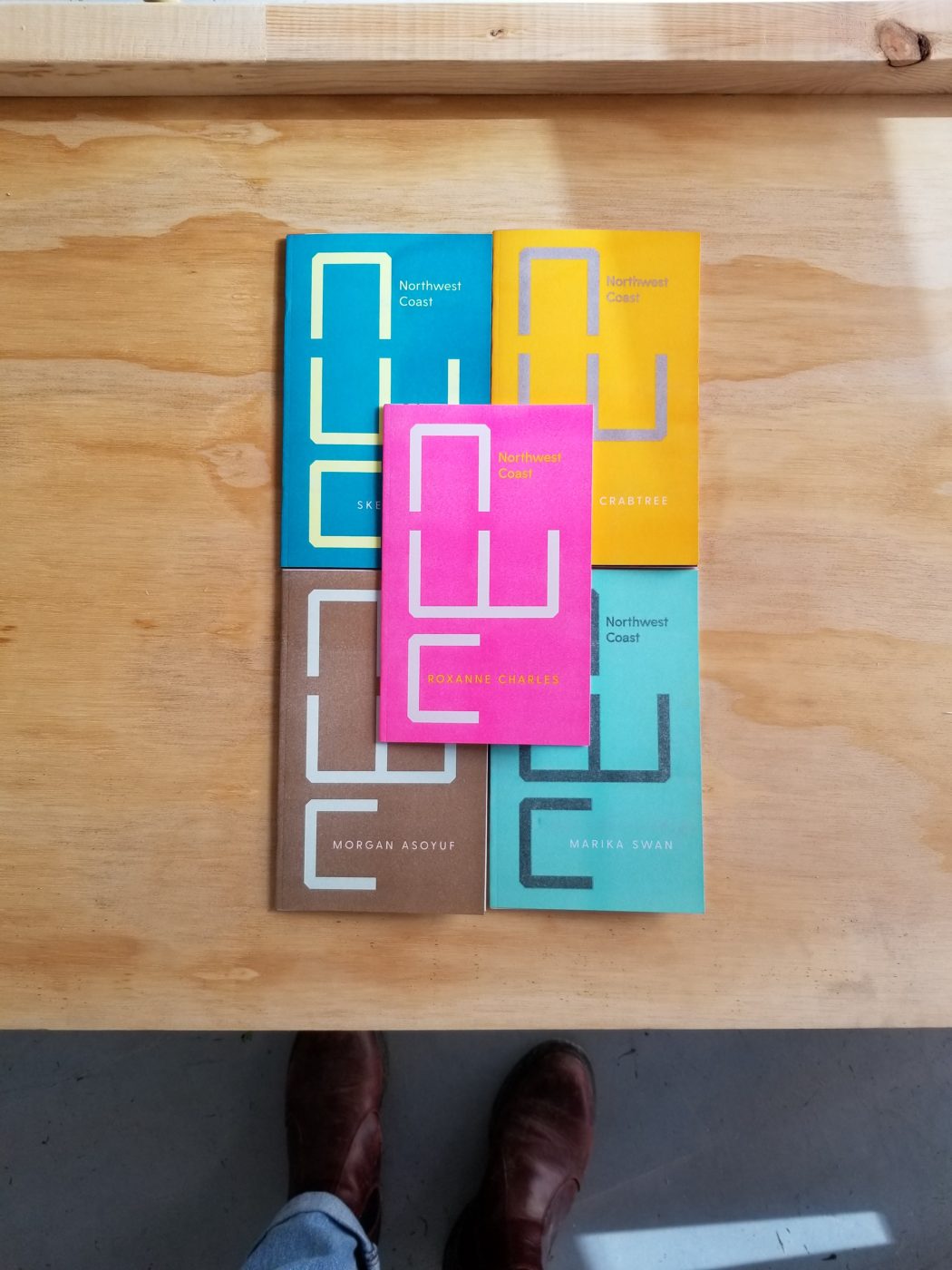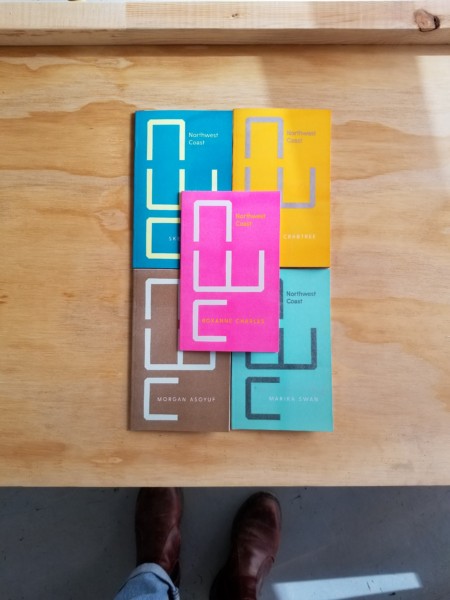Brenda Crabtree
Brenda Crabtree belongs to the Spuzzum Band and has both Nlaka’pamux and Stó:lō ancestry. Her art practice includes cedar and spruce root weaving, drum making, moose hair tufting and beadwork. Her weaving focuses on traditional fibres such as inner cedar bark, cedar roots, spruce roots, and wool. Crabtree holds a BA and an MA in Cultural Anthropology from Western Washington University. She is Director of Aboriginal Programs at Emily Carr University of Art and Design.
Morgan Asoyuf
Morgan Asoyuf (nee. Green) is a Tsm’syen interdisciplinary artist born in Prince Rupert BC. She is principally a jeweler, proficient in the techniques of hollow building, engraving, and gem setting. Her practice also includes painting, carving, and the fabrication of Tsm’syen regalia. She has apprenticed with artists such as Richard Adkins (Haida), Henry Green (Tsm’syen), and attended Vancouver Metal Art School with German goldsmith Gerold Mueller.
Skeena Reece
Skeena Reece is an interdisciplinary artist of Cree, Tsimshian, Gitxan and Metis descent. She attended the Emily Carr Institute of Art + Design, is a former director of the Indigenous Media Art Group and founder of the Native Youth Artists Collective. Her practice includes performance art, spoken word, humour, “sacred clowning,” writing, singing, songwriting, video and visual art.
Marika Echachis Swan
Marika Echachis Swan is a mother, artist, and community arts organizer of Tla-o-qui-aht (Nuu-chah-nulth), Scottish and Irish descent. Her creative practice explores feminist Nuu-chah-nulth values through woodblock printmaking, often layered with other techniques such as carving, stencil, and photography. Through her work with Carving on the Edge Festival, Swan developed The Nuu-chah-nulth Living Archive, a community led research project which locates and documents Nuu-chah-nulth ancestral belongings and materials held in institutions and private collections around the world.
Roxanne Charles
Roxanne Charles of Semiahmoo First Nation is an artist and cultural historian whose practice employs visual representation, oral history, and ceremony – methods that have been utilized by Semiahma People for thousands of years. Charles holds two undergraduate degrees from Kwantlen Polytechnic University and is currently completing her Master of Fine Arts degree at Simon Fraser University. Charles’ work directly responds to a troubling colonial present, and documents a variety of issues that reflect her life experience, such as spirituality, identity, urbanization, food security, resource extraction, trauma, and various forms of systemic violence.
Dana Claxton
Dana Claxton works in film, video, photography, single- and multi-channel video installation, and performance art. Her practice investigates beauty, the body, the socio-political, and the spiritual. Her work has been shown internationally at the Museum of Modern Art, Walker Art Centre, Sundance Film Festival, Eiteljorg Museum, and the Museum of Contemporary Art (Sydney) and held in public collections including the Vancouver Art Gallery, National Gallery of Canada, Art Bank of Canada, and the Winnipeg Art Gallery. She has received numerous awards including the VIVA Award and the Eiteljorg Fellowship.
Her work was selected for a Vancouver Art Gallery career survery (2018), the 17th Biennale of Sydney (2010), Biennale de Montréal (2007), Biennale d’art contemporain du Havre, France (2006), Micro Wave, Hong Kong (2005) Art Star Biennale, Ottawa (2005), and Wro 03 Media Arts Biennale Wroclaw Poland (2003). She has created commissioned works for the University of Lethbridge Gallery, Alternator Gallery, Winnipeg Art Gallery, Urban Shaman, Moose Jaw Museum and Art Gallery, and Tribe. She has presented talks at the Getty Institute and the Art College Association and the Opening Week Forum of the Biennale of Sydney.
Claxton was born in Yorkton, Saskatchewan, and her family reserve is Lakota First Nations – Wood Mountain, located in beautiful southwest Saskatchewan. Her paternal Euro-Canadian grandmother taught her how to harvest and preserve food and her maternal Lakota grandmother taught her to seek justice. Dana is the youngest of four siblings, an auntie, niece, cousin, and daughter.





